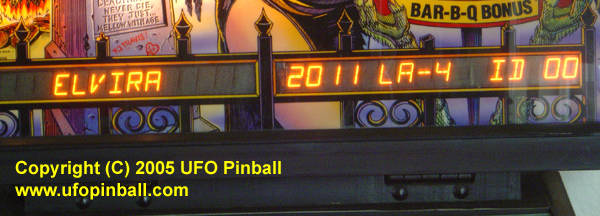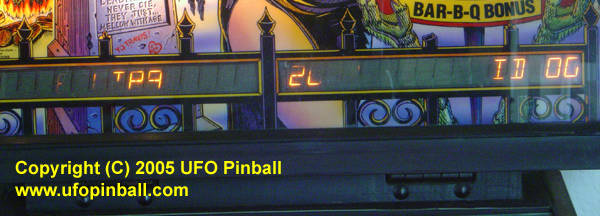Williams / Data East
Display Saver KitTM

About the Display Saver Kit
(Click on pictures to enlarge)
|
The Story There are few things sadder than watching a pinball display slowly die ... mainly because there's not a lot that we can do about it. Pinball displays are fragile, and have a finite lifespan. Replacement parts are expensive, becoming hard to find, and have always been a pain to install. For all these reasons, it is in our best interests to keep current parts in good working order, for as long as humanly possible. So how do we do this? I had visited Clay's Repair Guides: http://marvin3m.com/fix.htm ... and read up on how to extend the life of my pinball displays. The guides show how you can swap out the 1N4764A (100 volt, 1 watt) zener diode, for the 1N4763A (91 volt, 1 watt) zener diode. This has the effect of lowering the display voltage from +100v/-100v to +91v/-91v (or thereabouts). I decided that I wanted to keep my existing hardware for as long as I could, so I went ahead and re-rated all my Williams System 11 games (with the older Alpha-Numeric displays). I also replaced the big 39K resistors, which is recommended if your voltages are sagging. On some of my games, this turned out really well. The fix turned a working bright display into a working not-so-bright display. Brighter is of course more desirable ... but a dead display shows no light at all. Sacrifices must be made, for the greater good ... and to be perfectly honest, the new brightness level was still more than adequate. Unfortunately, not all my games took to the changes as gracefully. This fix also changes what turned out to be a somewhat marginal display, into a very flaky display. 
Elvira (Before) 
Elvira (After) Older displays require the higher voltage, or they will not light properly. If you have replacement tubes, you can always swap in the new ones and then the fix will work fine ... but this is exactly what we were trying to get away from in the first place, right? At this point, I took more of Clay's advice and replaced the 1N4730A (3.9 volt, 1 watt) zener diodes in hopes that it would help. Unfortunately, it did not ... the newer parts still produced a voltage level beneath the minimum to keep my displays going. For these games, the only solution was to go back to the 1N4764A (100 volt, 1 watt) zener diode. I kept wishing there was something in-between, like a 95 volt zener diode ... but alas, that sort of thing doesn't exist. So I went ahead and re-re-rated my power supplies back to the 100 volt design, the displays came back up nice and strong ... and why shouldn't they? The power supplies that were probably once sagging into the mid-90 volt range now had brand new parts. In fact, they were now pumping out a strong 102 or even 105 volts!! It quickly occured to me that my marginal displays were now going to burn out even faster with these freshly rebuilt power supplies!! This was NOT good news... I shook my head at this depressing thought, and decided there really should be a better way. I did a little brainstorming, and came up with a product that will allow you to save your displays by letting you reduce your display voltage in 1 volt increments. Better yet, this fix requires NO SOLDERING. Your original boards remain untouched!! 
Now that you know the background story, more detailed info is posted on the Features page. |
Back to the Main Page
Copyright © 2005 UFO PinballTM
www.ufopinball.com